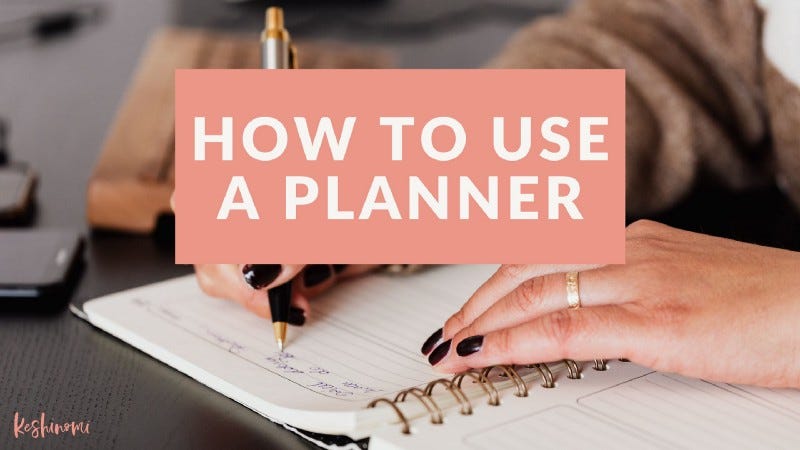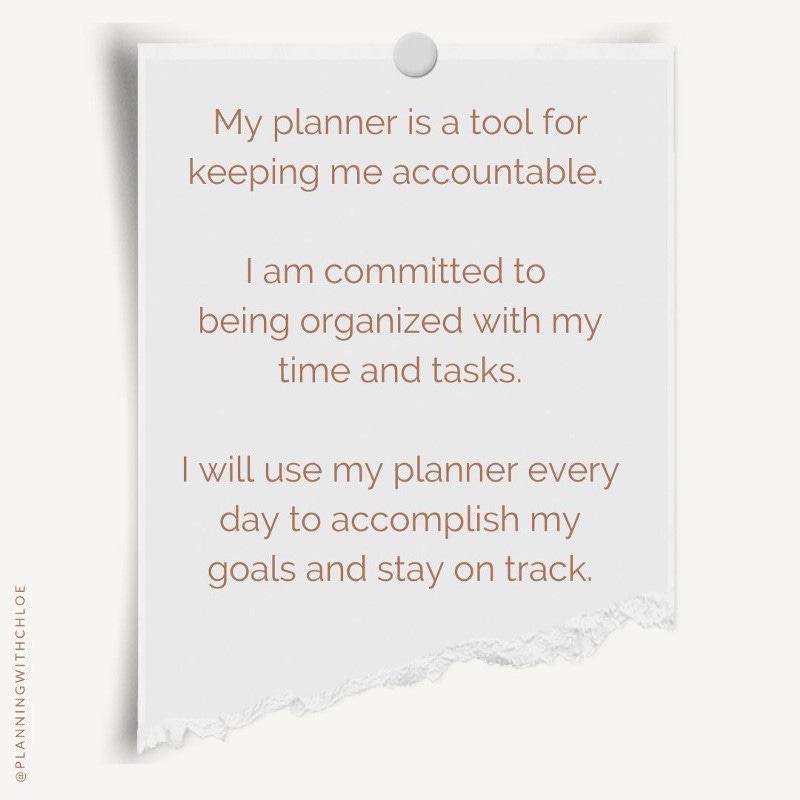4 Practical Tips for Using a Planner to Get Things Done
When I found out that paper planning is my thing, I looked to social media for inspiration. The problem was that what I saw was highly…
When I found out that paper planning is my thing, I looked to social media for inspiration. The problem was that what I saw was highly curated art projects disguised as planners. There were lots of pretty decorations, charms, bows, stickers and layers of visual ‘dashboards’ — lots of layers!
As a newcomer to the planning community, this completely distorted my idea of what my planner should look like.
So, if you’re looking for a craft hobby to relax or improve your wellbeing, then go for it with the deco! But I’m going to assume that if you’ve clicked on this article you’re looking for practical tips on how to improve your productivity and achieve your goals with a functional planner, not a fancy one.
Let’s dive in!
Tip One: An Affirmation
I’m beginning with an affirmation because it’s essential to make the distinction that you are creating a functional planning system to hold yourself accountable. That way, when you’re scrolling through Instagram or YouTube looking for inspiration, you won’t feel those pangs of unhealthy comparison when you see super neat, highly decorated, pretty planners.
Inspired by Hal Elrod’s formula for miracle morning affirmations:
“My planner is a tool for keeping me accountable. I am committed to being organized with my time and tasks. I will use my planner every day to accomplish my goals and stay on track.”
Reference: The Miracle Morning: The Not-So-Obvious Secret Guaranteed to Transform Your Life (Before 8AM) by Hal Elrod * A must read if you’re looking for daily habits to increase your personal development.
Tip Two: Keep Your Planner Accessible
Remember the saying “out of sight, out of mind”? If you don’t open your planner at least twice a day (morning and evening), are you really planning? Your planner is a reference tool for your life, so be sure to check it regularly. Doing this will help you stay on track with your goals and remember important tasks.
Tip Three: Think Big Picture, Small Picture
When I manage my life, I like to be able to both step back and look at the big picture, and zoom in to focus on the details. This helps me to keep my focus and not be overwhelmed by everything I need to do.
Here’s how I implement Big Picture, Small Picture thinking in my paper planner system:
Big Picture: A future log for important dates — this could be a yearly or quarterly spread.
Big Picture: Monthly spread for planning goals or projects.
Small Picture: Weekly or daily spread for breaking down goals or projects into manageable chunks.
Tip Four: Establish a Routine
Establish when and where you will do your planning. This ties back to point two. As James Clear notes in Atomic Habits*, ask yourself: “How can I make it obvious? How can I make it attractive? How can I make it easy? How can I make it satisfying?” These simple yet impactful questions can help you decide on your planning routine.
Closing
Creating a functional planning system for accountability is best supported by understanding that productivity isn’t about time management, but rather task management. Most people think the best way to gain clarity for their tasks is to make a to-do list. Personally, I think to-do lists are ineffective unless you incorporate some key concepts, which I discuss in this article — Is Your To Do List Toxic? Avoid These 3 Traps So You Can Actually Get Things Done.
This Post first appeared on Medium.
About Me
Hey there Planner Friend, I’m Chloe and I’m a professional graphic designer as well as the creator behind Keshinomi, not only do I love to geek out on paper planning stuff but I also love personal development stuff which is why we’re chatting about how to use your planner so you actually get things done.
* Affiliate link — Please note: As an Amazon Associate I earn from any qualifying purchases you may make after clicking these links.




